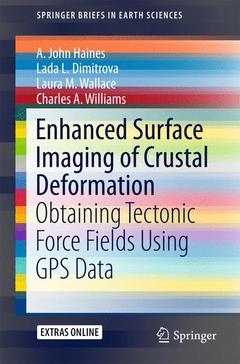Description
Enhanced Surface Imaging of Crustal Deformation, 1st ed. 2015
Obtaining Tectonic Force Fields Using GPS Data
SpringerBriefs in Earth Sciences Series
Authors: Haines A. John, Dimitrova Lada L., Wallace Laura M., Williams Charles A.
Language: English
Approximative price 52.74 €
In Print (Delivery period: 15 days).
Add to cartSupport: Print on demand
Description
/li>Contents
/li>Comment
/li>
This book takes an in depth look at a novel methodology for analyzing Global Positioning System (GPS) data to obtain the highest possible resolution surface imaging of tectonic deformation sources without prescribing the nature of either the sources or the subsurface medium. GPS methods are widely used to track the surface expression of crustal deformation at tectonic plate boundaries, and are typically expressed in terms of velocity fields or strain rate fields. Vertical derivatives of horizontal stress (VDoHS) rates at the Earth?s surface can also be derived from GPS velocities, and VDoHS rates provide much higher resolution information about subsurface deformation sources than velocities or strain rates. In particular, VDoHS rates allow for high precision estimates of fault dips, slip rates and locking depths, as well as objective characterization of previously unknown (or hidden) tectonic deformation zones.
1. Introduction
2. Introduction to the Vertical Derivatives of Horizontal Stress (VDoHS) Rates
3. Inversion Methodology
4. 1-Dimensional Synthetic Examples
5. Application to Central South Island, New Zealand
6. 2-Dimensional Examples
7. Concluding RemarksIncludes supplementary material: sn.pub/extras




